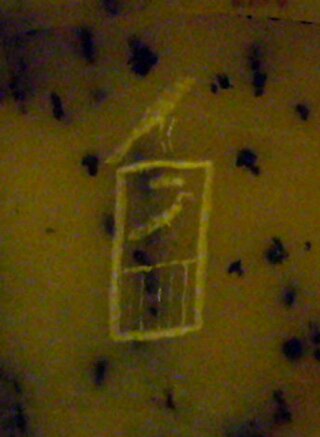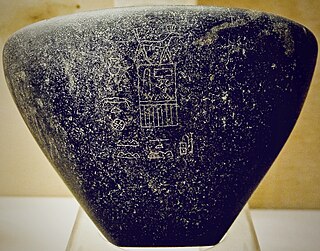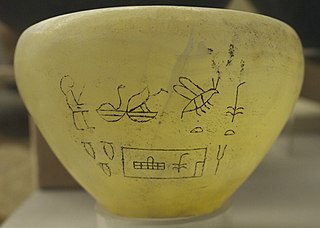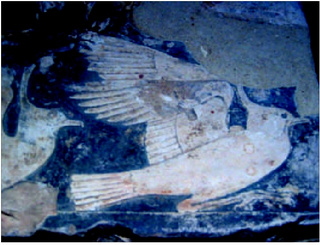
Pergamon or Pergamum, also referred to by its modern Greek form Pergamos (Πέργαμος), was a rich and powerful ancient Greek city in Mysia. It is located 26 kilometres (16 mi) from the modern coastline of the Aegean Sea on a promontory on the north side of the river Caicus and northwest of the modern city of Bergama, Turkey.

Aššur (; Sumerian: 𒀭𒊹𒆠 AN.ŠAR2KI, Assyrian cuneiform: Aš-šurKI, "City of God Aššur"; Syriac: ܐܫܘܪ Āšūr; Old Persian: 𐎠𐎰𐎢𐎼 Aθur, Persian: آشور Āšūr; Hebrew: אַשּׁוּר ʾAššūr, Arabic: اشور), also known as Ashur and Qal'at Sherqat, was the capital of the Old Assyrian city-state (2025–1364 BC), the Middle Assyrian Empire (1363–912 BC), and for a time, of the Neo-Assyrian Empire (911–609 BC). The remains of the city lie on the western bank of the Tigris River, north of the confluence with its tributary, the Little Zab, in what is now Iraq, more precisely in the al-Shirqat District of the Saladin Governorate.

Greek temples were structures built to house deity statues within Greek sanctuaries in ancient Greek religion. The temple interiors did not serve as meeting places, since the sacrifices and rituals dedicated to the respective ouranic deity took place outside them, within the wider precinct of the sanctuary, which might be large. Temples were frequently used to store votive offerings. They are the most important and most widespread surviving building type in Greek architecture. In the Hellenistic kingdoms of Southwest Asia and of North Africa, buildings erected to fulfill the functions of a temple often continued to follow the local traditions. Even where a Greek influence is visible, such structures are not normally considered as Greek temples. This applies, for example, to the Graeco-Parthian and Bactrian temples, or to the Ptolemaic examples, which follow Egyptian tradition. Most Greek temples were oriented astronomically.

Mentuhotep II, also known under his prenomen Nebhepetre, was an ancient Egyptian pharaoh, the sixth ruler of the Eleventh Dynasty. He is credited with reuniting Egypt, thus ending the turbulent First Intermediate Period and becoming the first pharaoh of the Middle Kingdom. He reigned for 51 years, according to the Turin King List. Mentuhotep II succeeded his father Intef III on the throne and was in turn succeeded by his son Mentuhotep III.

Huni was an ancient Egyptian king, the last pharaoh of the Third Dynasty of Egypt during the Old Kingdom period. Following the Turin king list, he is commonly credited with a reign of 24 years, ending c. 2613 BC.

Tell Halaf is an archaeological site in the Al Hasakah governorate of northeastern Syria, a few kilometers from the city of Ras al-Ayn near the Syria–Turkey border. The site, which dates to the sixth millennium BCE, was the first to be excavated from a Neolithic culture, later called the Halaf culture, characterized by glazed pottery painted with geometric and animal designs.

The Lemnian language was spoken on the island of Lemnos, Greece, in the second half of the 6th century BC. It is mainly attested by an inscription found on a funerary stele, termed the Lemnos stele, discovered in 1885 near Kaminia. Fragments of inscriptions on local pottery show that it was spoken there by a community. In 2009, a newly discovered inscription was reported from the site of Hephaistia, the principal ancient city of Lemnos. Lemnian is largely accepted as being a Tyrsenian language, and as such related to Etruscan and Raetic. After the Athenians conquered the island in the latter half of the 6th century BC, Lemnian was replaced by Attic Greek.

Sam'al, is an archaeological site located in the Anti-Taurus Mountains of modern Turkey's Gaziantep Province. During its time under the control of the Neo-Assyrian Empire it was called, by them, Sam'al. It was founded at least as far back as the Early Bronze Age and thrived between 3000 and 2000 BC, and on the highest part of the upper mound was found a walled citadel of the Middle Bronze Age. New excavations revealed a monumental complex in the Middle Bronze Age II, and another structure that was destroyed in the mid to late 17th century BC, maybe by Hititte king Hattusili I. This event was recently radiocarbon-dated to sometime between 1632 and 1610 BC, during the late Middle Bronze Age II. The site was thought to have been abandoned during the Hittite and Mitanni periods, but excavations in 2021 season showed evidence of occupation during the Late Bronze Age in Hittite times. It flourished again in the Iron Age, initially under Luwian-speaking Neo-Hittites, and by 920 B.C. had become a kingdom. In the 9th and 8th century BC it came under control of the Neo-Assyrian Empire and by the 7th century BC had become a directly ruled Assyrian province.

Khaba was a pharaoh of Ancient Egypt, active during the 3rd Dynasty of the Old Kingdom period. The exact time during which Khaba ruled is unknown but may have been around 2670 BC, and almost definitely towards the end of the dynasty.

Seth-Peribsen is the serekh name of an early Egyptian monarch (pharaoh), who ruled during the Second Dynasty of Egypt. His chronological position within this dynasty is unknown and it is disputed who ruled both before and after him. The duration of his reign is also unknown.

Semerkhet is the Horus name of an early Egyptian king who ruled during the First Dynasty. This ruler became known through a tragic legend handed down by the historian Manetho, who reported that a calamity of some sort occurred during Semerkhet's reign. The archaeological records seem to support the view that Semerkhet had a difficult time as king and some early archaeologists questioned the legitimacy of Semerkhet's succession to the Egyptian throne.

Gerhard Friedrich Müller was a Russian–German historian and pioneer ethnologist.

The Temple of Edfu is an Egyptian temple located on the west bank of the Nile in Edfu, Upper Egypt. The city was known in the Hellenistic period in Koinē Greek: Ἀπόλλωνος πόλις and in Latin as Apollonopolis Magna, after the chief god Horus, who was identified as Apollo under the interpretatio graeca. It is one of the best preserved shrines in Egypt. The temple was built in the Ptolemaic Kingdom between 237 and 57 BC. The inscriptions on its walls provide important information on language, myth and religion during the Hellenistic period in Egypt. In particular, the Temple's inscribed building texts "provide details [both] of its construction, and also preserve information about the mythical interpretation of this and all other temples as the Island of Creation." There are also "important scenes and inscriptions of the Sacred Drama which related the age-old conflict between Horus and Seth." They are translated by the Edfu-Project.

The word Rekhyt, also romanized as Rechit, referred to a people living in the northern Nile Delta in the Early Dynastic Period of Ancient Egypt, as well as the deity Rekhyt from the Middle Kingdom onwards. The Rekhyt people’s origins are unclear, as they were not yet considered Egyptians at the beginning of the 3rd millennium BC. Their settlement area extended to the border of Retjenu. Early inscriptions and monuments speak of the Rekhyt as mythological inhabitants of the Nile Delta, as all "northern enemies of Upper Egypt" were also among the "inhabitants of Qebehu".

Neferkasokar was an Ancient Egyptian king (pharaoh) who may have ruled in Egypt during the 2nd Dynasty. Very little is known about him, since no contemporary records about him have been found. Rather his name has been found in later sources.

The Punic-Libyan bilingual inscriptions are two important ancient bilingual inscriptions dated to the 2nd century BC.

The Ptolemaic cult of Alexander the Great was an imperial cult in ancient Egypt during the Hellenistic period, promoted by the Ptolemaic dynasty. The core of the cult was the worship of the deified conqueror-king Alexander the Great, which eventually formed the basis for the ruler cult of the Ptolemies themselves. The head priest of the imperial cult was the chief priest in the Ptolemaic Kingdom.
Idfa is a village in Sohag Governorate in Upper Egypt located 6.4 km (4.0 mi) from the nearby city of Sohag. In antiquity, it was known by the ancient Egyptians as Iteb, then it was named by the Greeks as Itos.

The Carthage Festival inscription or Carthage Festival Offering inscription is an inscription from Carthage in the Punic language that probably describes the liturgy of a festival of, at least, five days. It is dated to the fourth or third century BCE.
Égyptien de tradition, also known as Traditional Egyptian, is a literary and religious hieroglyphic written language artificially cultivated in ancient Egypt from the later New Kingdom until the Greco-Roman Period. It is based on older varieties of Egyptian, in particular Middle Egyptian but in some cases also contains characteristics of Old Egyptian, Late Egyptian, or Demotic.


















